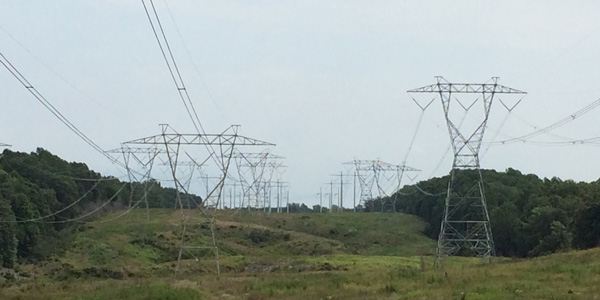By Rory D. Sweeney
VALLEY FORGE, Pa. — PJM’s Planning Committee held a special session last week to begin soliciting stakeholder input on changes to the RTO’s selection process for Order 1000 projects.
The goal of the ongoing sessions is to develop consensus on how decisions are made prior to the opening of the Regional Transmission Expansion Plan’s long-term proposal window Nov. 1, said Steve Herling, PJM’s vice president of planning and chair of the committee. The window, for market efficiency projects, will remain open through March 2017.
Eventually, the rules will be incorporated into PJM’s governing documents and receive FERC approval, but Herling acknowledged “there’s no way in the world that we’re going to have this approved at FERC before Nov. 1.”
At the meeting, PJM staff explained their concepts for the process, outlined a workflow diagram and highlighted a variety of examples to help stakeholders understand how PJM is likely to evaluate proposals.
“We’re trying to lay out our past thinking on this,” Herling said, “but … one of the whole points of this exercise is to start collecting metrics that you think need to be” included.
PJM hopes the input will provide perspectives it hadn’t considered so that proposals receive accurate, fair comparisons. While staff is attempting to be holistic in its evaluations, “we can’t say with absolute certainty that there won’t be a question raised by one of you that [shows] we missed some key benefit of one of your projects,” Herling said.
The RTO’s first Order 1000 project, the stability fix for Artificial Island in New Jersey, has been the subject of years of controversy and delay, both over PJM’s developer selection process and the resulting cost allocation. (See PJM Board Halts Artificial Island Project, Orders Staff Analysis.)
For market efficiency projects, PJM factors net load payment benefits, production cost benefits and overall PJM congestion benefits into its evaluation and requires a benefit-to-cost ratio greater than 1.25 to pass. Proposals that pass the B/C test then get evaluated for congestion reductions and overall changes, load payments, production costs and associated sensitivities, such as gas and renewable penetration, carbon policy and import/export requirements.
Stakeholders asked that development cost be considered and requested as much quantitative guidance as possible. They voiced concern about how carbon dioxide assumptions, forecasted long-term benefits and proposals offering cost caps are factored into the evaluation.
“We can’t have economic thinking thrown out the window here once a project crosses the B/C ratio,” Sharon Segner of LS Power said. PJM’s Suzanne Glatz pointed out that projects estimated to cost more than $50 million require independent cost analyses and constructability analyses.
“We do reserve the right to kind of break [proposals] down and put them back together to create a better, more cost-effective solution,” Herling said.
Further meetings on this topic are scheduled for Oct. 3, Oct. 21 and Nov. 11, during which PJM staff will introduce the regional metric for project selections.


